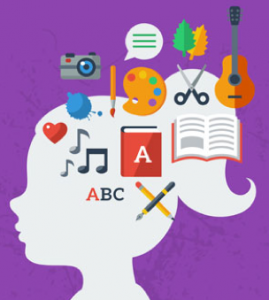 |
Researchers
|
|
Description
This project focuses on understanding how novice programmers are learning to program in block-based programming environments, how they are understanding the components of these environments, how they are apply programming concepts learned, and how do they create artifacts. This project leverage advances in Electroencephalography (EEG) research to explore students mental effort on learning CS concept and complete programming tasks in block-based programming.
|
Publications
Peer Reviewed Conference Papers
- Jimenez, Y. (2018). Using Electroencephalography (EEG) to Understand and Compare Students’ Mental Effort as they Learn to Program Using Block-Based and Hybrid Programming Environments. IEEE Symposium on Visual Languages and Human-Centric Computing (VL/HCC), Lisbon, Portugal.
- Jimenez, Y. (2017). “Towards Understanding Student’s Mental Effort in Block-Based Programming Environments Using Electroencephalogram (EEG)”. Accepted at 2017 International Computing Education Research (ICER), Tacoma, WA.
Peer Reviewed Conference Posters
- Jimenez, Y., & Gardner-McCune, C. (2018). Usability Challenges that Novice Programmers Experience when Using Scratch for the First Time. IEEE Symposium on Visual Languages and Human-Centric Computing (VL/HCC), Lisbon, Portugal.
- Jimenez, Y., Gardner-McCune, C., & Lichtenstein, S. Understanding Novice Programmers Perceptions of their First Programming Experience. Accepted at 2017 International Computing Education Research (ICER), Tacoma, WA.
- Jimenez, Y. (2017). Towards Understanding Student’s Mental Effort in Block-Based Programming Environments Using
Electroencephalogram (EEG). Accepted at 2017 International Computing Education Research (ICER), Tacoma, WA.
|
